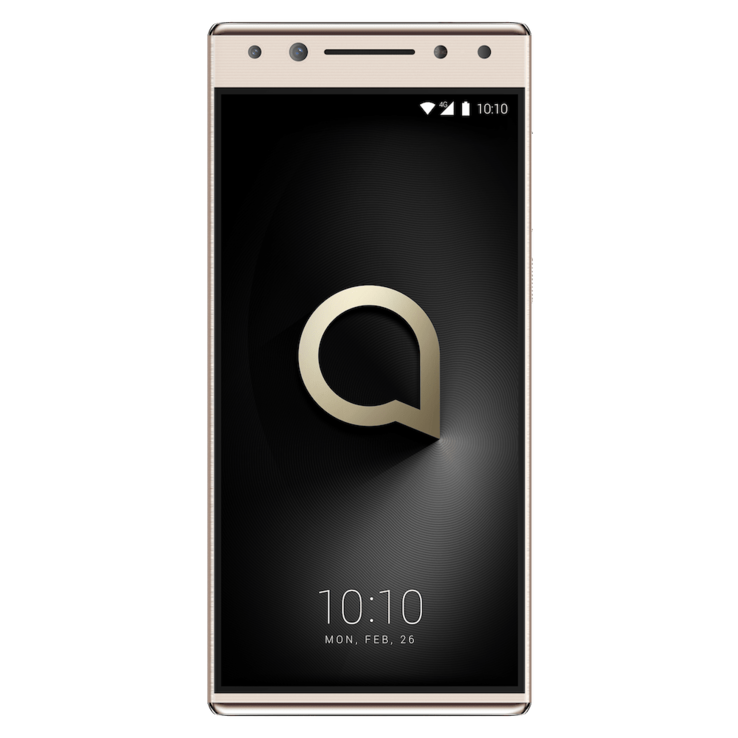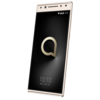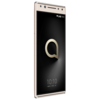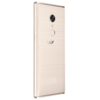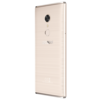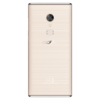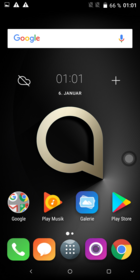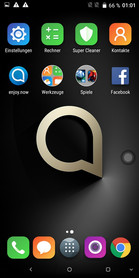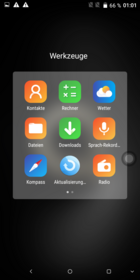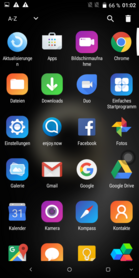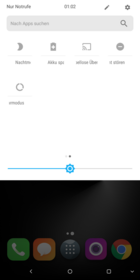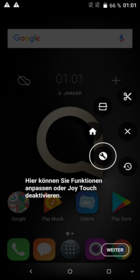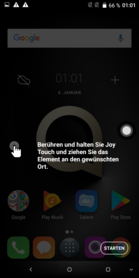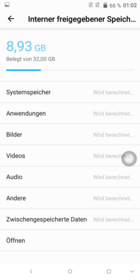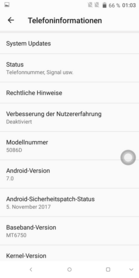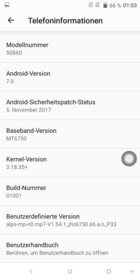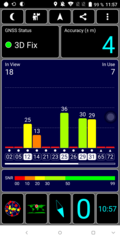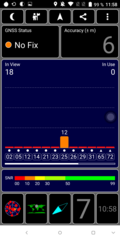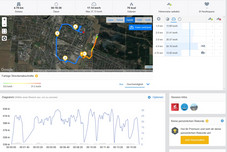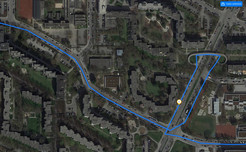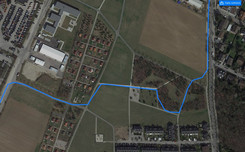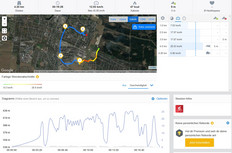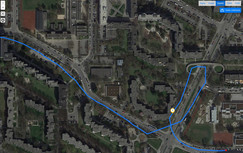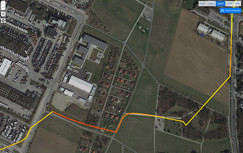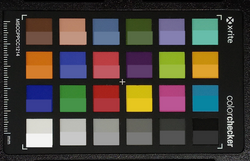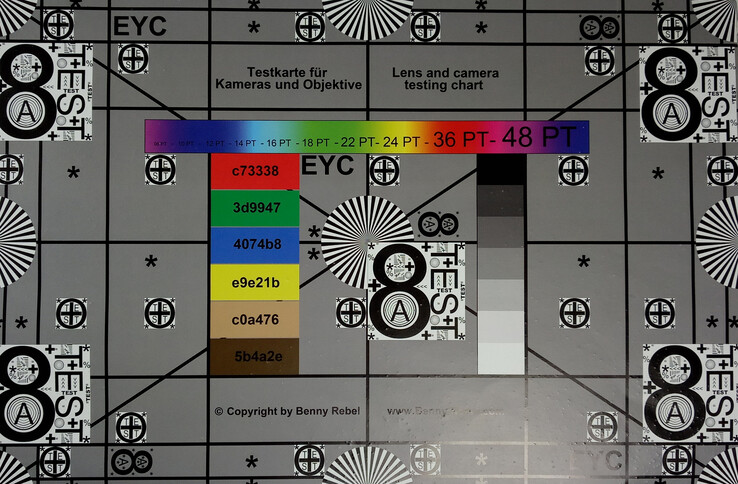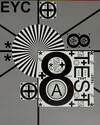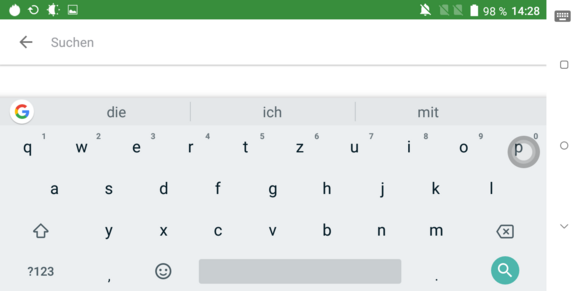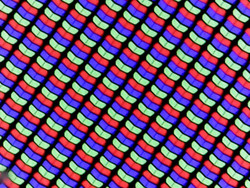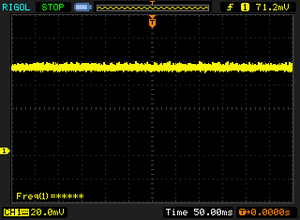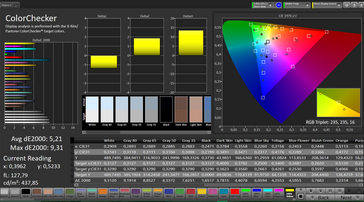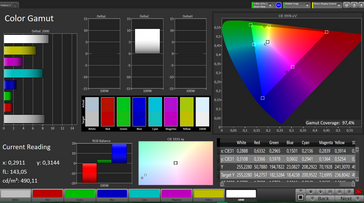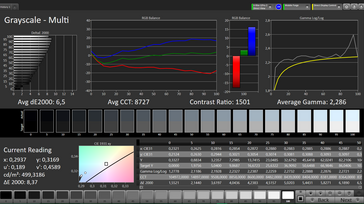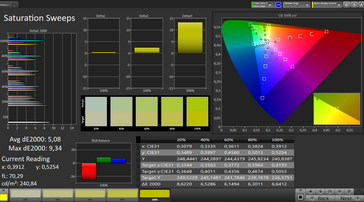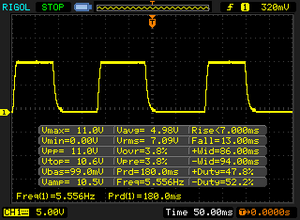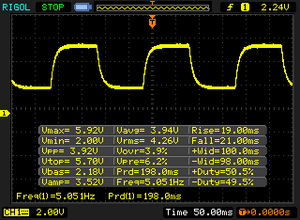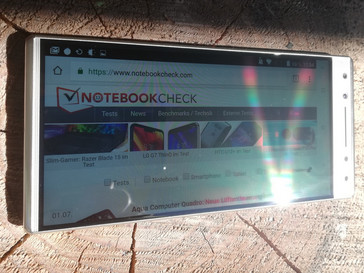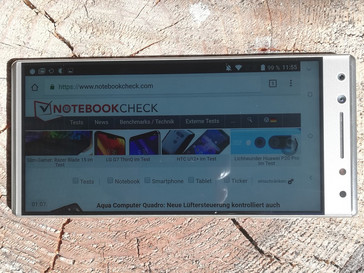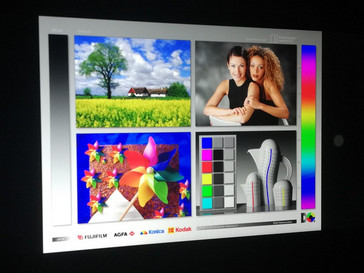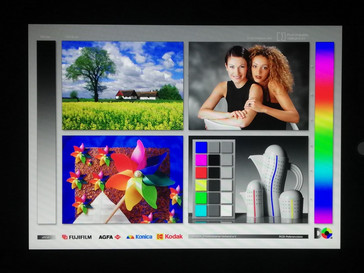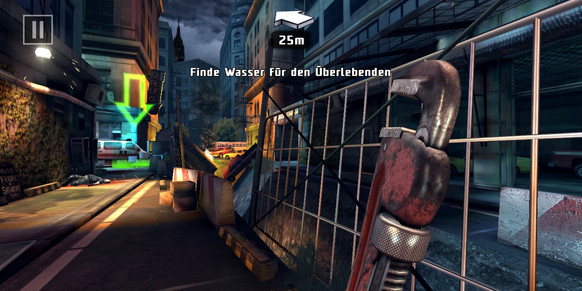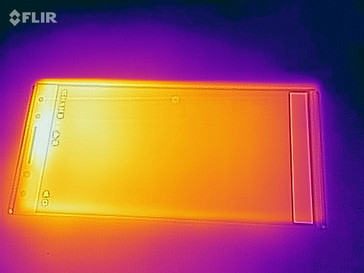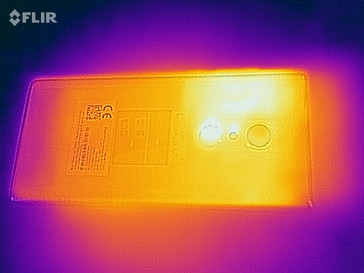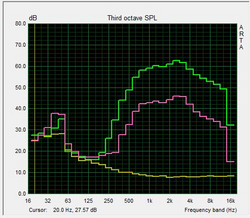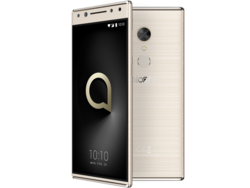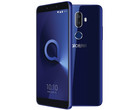Alcatel 5 Smartphone Review
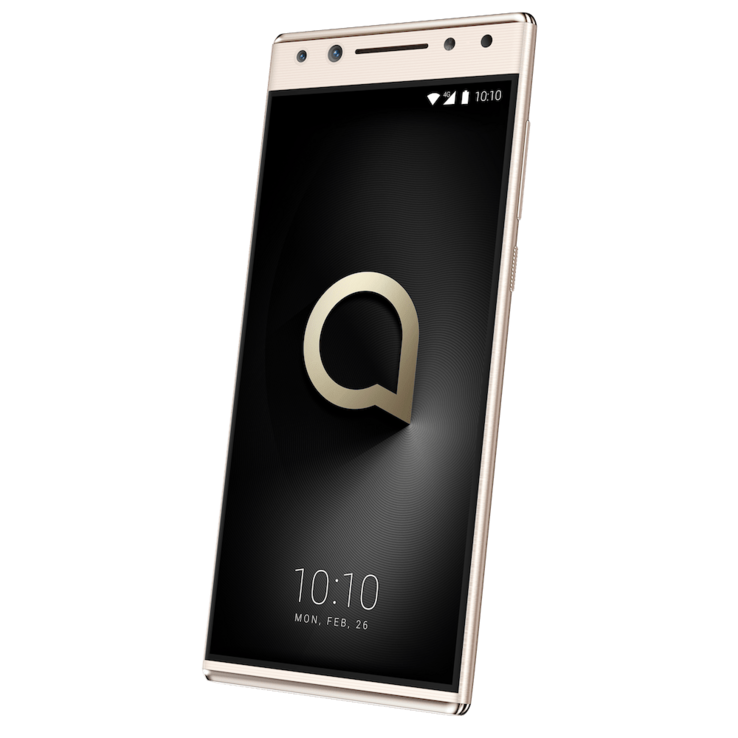
The Alcatel 5 is supposed to contribute to the use of the "Alcatel" name becoming more frequent among smartphone buyers this year. An affordable price in combination with mid-range hardware and the unusual design of the Android smartphone is meant to ensure this. The design of the Alcatel 5 should mainly please adversaries of the notch and fans of a bezel-less design. Even though there is a solid hardware base with the already two-year old MediaTek MT6750 SoC and ARM's Mali T860-MP2 GPU, the fact that our test unit runs "only" Android 7.0 instead of Oreo might scare off some potential buyers. In addition, there is 3 GB of working memory and 32 GB of eMMC flash storage.
In the price range between 200 and 250 Euros (~$234-292), interested buyers can choose among an abundance of offerings. To give you an appropriate overview of the competitors, we select smartphones with a similar price and performance for comparison in our test. These include the Moto G6 Plus from Motorola, BQ's Aquaris VS Plus, the Nokia 6 (2018), and the P20 Lite from Huawei, among others.
Case - The Alcatel smartphone is made of metal
The back of the Alcatel 5 is made of metal and the rest of the device is plastic. The smartphone is available in black and gold colors. Our test unit is the latter color and is reminiscent of yellow-gold jewelry. At the front, the display dominates the surface with the bezels being very thin on three sides. Elements such as the ear piece, front camera, and light sensor are arranged in a strip above the screen which is about a centimeter wide (~0.4 in).
The physical control elements are on the right side of the unit and are placed in their frames with a very slight play. The grooved surface of the power knob also ensures a good grip. On the left side, there is only the SIM/SD card slot, and the back is characterized by the fingerprint sensor and the main camera.
Features - A mid-range smartphone from Alcatel
Alcatel has equipped the mid-range smartphone with MediaTek's MT6750 and an ARM Mali T860-MP2 graphics unit. In addition, there is 2 GB of RAM and 32 GB of internal eMMC flash storage. You can insert either two nano-SIM cards or a SIM and a microSD card into the slot on the left side.
In order to connect the charger, the manufacturer uses a USB Type-C connection which only operates at the USB-2.0 standard internally. You can also connect external audio devices or the included stereo headset via a 3.5 mm audio port at the top.
Software - Android is not current anymore in the Alcatel
Buyers of the Alcatel 5 receive a relatively pure Android 7.0 with security updates on the level of November 5, 2017. In addition to the adjusted icons, the Android smartphone offers a semi-circular menu called "Joy Touch," allowing you to quickly create screenshots or assign any programs to a quick-selection. In addition to some preinstalled games, Alcatel has also installed an Office suite on the smartphone and offers access to support, news, and tutorials about the Alcatel smartphone with the "enjoy.now" app. All the preinstalled programs can be uninstalled in the menu without any problems.
If more than one user needs access to the Alcatel 5, you can add several user accounts in the settings menu.
Communication and GPS - Locating the position with some dropouts
The Alcatel 5 is able to create mobile connections via GSM, UMTS, and LTE. The latter is possible in category 4, enabling it to reach download rates of up to 150 Mb/s and upload speeds of up to 50 Mb/s. The reception is still acceptable in areas with bad network coverage.
At close range, the Alcatel smartphone can use Bluetooth 4.2 and WLAN. The transfer rates we measured are below average and unsuitable for a smartphone in this price range. In the comparison, our test unit has to be content with last place. Comparable devices are at least three times as fast in the WLAN.
| Networking | |
| iperf3 transmit AX12 | |
| Nokia 6 2018 | |
| Motorola Moto G6 Plus | |
| Huawei P20 Lite | |
| BQ Aquaris VS Plus | |
| Alcatel 5 | |
| iperf3 receive AX12 | |
| Motorola Moto G6 Plus | |
| Nokia 6 2018 | |
| BQ Aquaris VS Plus | |
| Huawei P20 Lite | |
| Alcatel 5 | |
Using the "GPS Test" app, we test how accurately the Alcatel 5 can determine our own location. It turns out that the Android smartphone determines our position outdoors at an accuracy of up to four meters using GPS and GLONASS, while the satellite connection is quickly lost indoors, making locating us impossible.
During our compulsory bike tour, the GPS of the Alcatel 5 makes full use of its maximum tolerance of four meters and positions us next to the real route again and again. Not only are tight turns recorded inaccurately but also longer curves are frequently cut off. While you can use the Alcatel smartphone for coarse navigation tasks, you should choose professional navigation devices if you need an accurate location.
Telephone Functions and Voice Quality - The Android smartphone is too quiet
The standard Android app for telephony is available to the users of the Alcatel 5. With this, you can easily select conversation partners from the phone book or manually enter the numbers to call. The voice quality is limited to the minimum that is absolutely necessary to transfer voices still understandably. Conversation partners sound slightly distorted and the low volume is hardly able to get through the surrounding noises. You also need to expect limitations at the other end of the phone call. The microphone in the Android smartphone transfers voices quite muffled and also slightly distorted.
While the speakerphone function delivers a slightly better sound quality, the low overall volume is also a hindrance here. However, in a quiet office you can still use it to have both hands available, for example. The included stereo headset presents a good alternative here, contributing positively to the communication during the phone call with its higher volume and better sound quality.
Cameras - Alcatel 5, the selfie smartphone
The Alcatel 5 offers users a simple camera with a 12-MP sensor in the back and a dual camera setup in front. With an f/2.0 aperture, the latter can also take usable pictures indoors in rooms that are only illuminated by daylight. The 13 and 5 MP photo sensors create selfies with a resolution of 3120x4160 pixels. Using two sliders, the image can be softened before it is recorded and the color temperature can be adjusted. In addition, the photo app recognizes whether there are only one or more subjects in the image and changes automatically into a wide-angle mode to be able to record everyone.
Panorama pictures taken with the 12-MP main camera of the Alcatel 5 turn out slightly too dark, while the light and dark areas are well delineated. Details are also maintained and the colors are well defined. Close-ups also turn out too dark, and our test picture shows a slight blurriness at the edges of objects when the light conditions are not quite ideal. Under bad light conditions, the image contents become very pixelated but are still recognizable and surpass the low-light quality of our comparison camera. Aside from the options to select among various modes and adjust the resolution, the Alcatel 5 does not offer any options to influence the quality of the camera recordings.
We test the quality of the color reproduction of the Alcatel 5 camera using the ColorChecker Passport. This confirms the impression of our test pictures that all the color tones, including the gray and black tones, are reproduced too dark.
While our test chart is also reproduced too dark under controlled light conditions, details and fine structures are kept, and we only notice minimal blurriness at the bottom edges.
Accessories and Warranty - Stereo headset included with the Alcatel
Included with the Alcatel 5 are a USB charger with the corresponding USB Type-C cable, a tool for opening the SIM/SD card slot, and a stereo headset. The latter is suited well for making phone calls and can also be used for listening to music, even though the bass is lacking. For additional accessories, users need to look for offerings from third-party manufacturers.
Alcatel offers a warranty of 24 months to users of the Android smartphone. Please see our Guarantees, Return policies and Warranties FAQ for country-specific information.
Input Devices and Operation - The usual smartphone keyboard
For text input, Google's GBoard is available to users of the Alcatel 5. With this, even longer input succeeds quickly and easily. Every input is acknowledged with a slight vibration. While there is sufficient space on the display for the keyboard and the display content in portrait format, the keyboard almost takes the whole display area in landscape format. The touchscreen responds very directly to every touch and hardly offers any resistance to the fingertips, enabling drag-and-drop movements without any problems.
The user can set up several options to unlock the Alcatel smartphone. In addition to a PIN and a pattern, you can also register your fingerprint or face. The fingerprint sensor needs a very brief moment to recognize the print and unlock the device. The face recognition software unlocks the device almost without any delay and is faster than you can draw a pattern on the screen or enter a PIN.
Display - Smartphone with a good contrast
Alcatel uses a 5.7-inch IPS panel with a resolution of 1440x720 pixels in the Alcatel 5. This is below the average of this price range, and at about 480 cd/m², the measured brightness is lower than those of comparable devices. Smartphones such as the Moto G6 Plus have clearly more to offer in this regard.
| |||||||||||||||||||||||||
Brightness Distribution: 95 %
Center on Battery: 495 cd/m²
Contrast: 1686:1 (Black: 0.29 cd/m²)
ΔE ColorChecker Calman: 5.21 | ∀{0.5-29.43 Ø4.77}
ΔE Greyscale Calman: 6.5 | ∀{0.09-98 Ø5}
97.4% sRGB (Calman 2D)
Gamma: 2.286
CCT: 8727 K
| Alcatel 5 IPS, 1440x720, 5.7" | Motorola Moto G6 Plus IPS, 2160x1080, 5.9" | Nokia 6 2018 IPS, 1920x1080, 5.5" | Huawei P20 Lite IPS, 2280x1080, 5.8" | BQ Aquaris VS Plus IPS, 1920x1080, 5.5" | |
|---|---|---|---|---|---|
| Screen | 12% | -31% | -11% | -11% | |
| Brightness middle (cd/m²) | 489 | 761 56% | 417 -15% | 528 8% | 634 30% |
| Brightness (cd/m²) | 480 | 723 51% | 421 -12% | 525 9% | 635 32% |
| Brightness Distribution (%) | 95 | 90 -5% | 88 -7% | 89 -6% | 96 1% |
| Black Level * (cd/m²) | 0.29 | 0.69 -138% | 0.61 -110% | 0.51 -76% | 0.49 -69% |
| Contrast (:1) | 1686 | 1103 -35% | 684 -59% | 1035 -39% | 1294 -23% |
| Colorchecker dE 2000 * | 5.21 | 2.4 54% | 6.1 -17% | 4.7 10% | 5.9 -13% |
| Colorchecker dE 2000 max. * | 9.31 | 5.2 44% | 11.2 -20% | 8.9 4% | 11.6 -25% |
| Greyscale dE 2000 * | 6.5 | 1.8 72% | 7.1 -9% | 6.4 2% | 7.8 -20% |
| Gamma | 2.286 96% | 2.21 100% | 2.16 102% | 2.22 99% | 2.16 102% |
| CCT | 8727 74% | 6312 103% | 8362 78% | 7987 81% | 8464 77% |
* ... smaller is better
Screen Flickering / PWM (Pulse-Width Modulation)
| Screen flickering / PWM not detected | |||
In comparison: 53 % of all tested devices do not use PWM to dim the display. If PWM was detected, an average of 8083 (minimum: 5 - maximum: 343500) Hz was measured. | |||
Whatever remains to be desired about the resolution of the display is made up for by its very good contrast ratio of 1686:1 and a black value of 0.29. Colors are strong and clearly defined, and black tones also appear very saturated. In this area, the comparison devices are worse in our test than the Alcatel smartphone. However, the CalMAN analysis attests the display with a clear blue tint, with red colors being strongly underrepresented.
Display Response Times
| ↔ Response Time Black to White | ||
|---|---|---|
| 20 ms ... rise ↗ and fall ↘ combined | ↗ 7 ms rise | |
| ↘ 13 ms fall | ||
| The screen shows good response rates in our tests, but may be too slow for competitive gamers. In comparison, all tested devices range from 0.1 (minimum) to 240 (maximum) ms. » 42 % of all devices are better. This means that the measured response time is similar to the average of all tested devices (20.2 ms). | ||
| ↔ Response Time 50% Grey to 80% Grey | ||
| 40 ms ... rise ↗ and fall ↘ combined | ↗ 19 ms rise | |
| ↘ 21 ms fall | ||
| The screen shows slow response rates in our tests and will be unsatisfactory for gamers. In comparison, all tested devices range from 0.165 (minimum) to 636 (maximum) ms. » 60 % of all devices are better. This means that the measured response time is worse than the average of all tested devices (31.6 ms). | ||
Performance - Average performance by the Alcatel
The computations in the Alcatel 5 are handled by a MediaTek MT6750 SoC in combination with an ARM Mali T860-MP2 graphics unit. Both hardware components are supported by 3 GB of working memory and 32 GB of internal eMMC flash storage. This sort of equipment could already be found in mid-range smartphones for the last two years and can ensure a smooth system operation.
In our benchmark tests, the Alcatel smartphone only manages to reach one of the last places in our comparison list, with the PCMark benchmark being aborted several times with an error message. While the results reflect the performance of the Mediatek SoC very well, we should be able to expect a bit more performance from devices in this price range.
| AnTuTu v6 - Total Score (sort by value) | |
| Alcatel 5 | |
| Motorola Moto G6 Plus | |
| Nokia 6 2018 | |
| Huawei P20 Lite | |
| BQ Aquaris VS Plus | |
| Average Mediatek MT6750 (38547 - 44842, n=17) | |
| AnTuTu v7 - Total Score (sort by value) | |
| Alcatel 5 | |
| Motorola Moto G6 Plus | |
| Nokia 6 2018 | |
| Huawei P20 Lite | |
| BQ Aquaris VS Plus | |
| Average Mediatek MT6750 (52278 - 56639, n=10) | |
| GFXBench 3.0 | |
| on screen Manhattan Onscreen OGL (sort by value) | |
| Alcatel 5 | |
| Motorola Moto G6 Plus | |
| Nokia 6 2018 | |
| Huawei P20 Lite | |
| BQ Aquaris VS Plus | |
| Average Mediatek MT6750 (5.6 - 13, n=17) | |
| Average of class Smartphone (18 - 166, n=157, last 2 years) | |
| 1920x1080 1080p Manhattan Offscreen (sort by value) | |
| Alcatel 5 | |
| Motorola Moto G6 Plus | |
| Nokia 6 2018 | |
| Huawei P20 Lite | |
| BQ Aquaris VS Plus | |
| Average Mediatek MT6750 (5.3 - 7.1, n=17) | |
| Average of class Smartphone (12 - 606, n=156, last 2 years) | |
| GFXBench 3.1 | |
| on screen Manhattan ES 3.1 Onscreen (sort by value) | |
| Alcatel 5 | |
| Motorola Moto G6 Plus | |
| Nokia 6 2018 | |
| Huawei P20 Lite | |
| BQ Aquaris VS Plus | |
| Average Mediatek MT6750 (3.8 - 10, n=17) | |
| Average of class Smartphone (11 - 166, n=157, last 2 years) | |
| 1920x1080 Manhattan ES 3.1 Offscreen (sort by value) | |
| Alcatel 5 | |
| Motorola Moto G6 Plus | |
| Nokia 6 2018 | |
| Huawei P20 Lite | |
| BQ Aquaris VS Plus | |
| Average Mediatek MT6750 (3.5 - 4.7, n=17) | |
| Average of class Smartphone (8.4 - 413, n=156, last 2 years) | |
The results in the browser benchmark are mixed and range from the last place in our comparison list to the first place in Mozilla Kraken 1.1. In everyday operation, the browser performance is good, and websites are rendered quickly and smoothly. Only sites with media content need slightly longer to be loaded.
| JetStream 1.1 - Total Score | |
| Nokia 6 2018 (Browser: Chrome 65) | |
| Motorola Moto G6 Plus (Chrome 66) | |
| Huawei P20 Lite (Chrome 63) | |
| Alcatel 5 (Chrome 67) | |
| Average Mediatek MT6750 (12 - 20.8, n=19) | |
| Octane V2 - Total Score | |
| Average of class Smartphone (2228 - 126661, n=195, last 2 years) | |
| Motorola Moto G6 Plus (Chrome 66) | |
| Nokia 6 2018 (Browser: Chrome 65) | |
| Huawei P20 Lite | |
| BQ Aquaris VS Plus | |
| Alcatel 5 (Chrome 67) | |
| Average Mediatek MT6750 (1994 - 3506, n=19) | |
| Mozilla Kraken 1.1 - Total | |
| Average Mediatek MT6750 (11708 - 22627, n=19) | |
| Alcatel 5 (Chrome 67) | |
| BQ Aquaris VS Plus (Chrome 65) | |
| Huawei P20 Lite (Chrome 63) | |
| Nokia 6 2018 (Browser: Chrome 65) | |
| Motorola Moto G6 Plus (Chrome 66) | |
| Average of class Smartphone (257 - 28190, n=155, last 2 years) | |
| WebXPRT 2015 - Overall | |
| Nokia 6 2018 | |
| Motorola Moto G6 Plus (Chrome 66) | |
| Huawei P20 Lite (Chrome 63) | |
| Alcatel 5 (Chrome 67) | |
| BQ Aquaris VS Plus (Chrome 65) | |
| Average Mediatek MT6750 (34 - 78, n=5) | |
* ... smaller is better
In our test, the internal storage of the Alcatel 5 only achieves mediocre read and write rates that are still above the average of comparable devices with 32 GB of eMMC flash storage.
The microSD card reader also achieves only below-average values with our Kingston storage card. Due to a read error, we were unable to use our usual Toshiba Exceria Pro M501 reference storage card. When using a microSD card to expand the storage, it can be reformatted as internal storage in order to increase the overall storage space for apps and your own data.
| Alcatel 5 | Motorola Moto G6 Plus | Nokia 6 2018 | Huawei P20 Lite | BQ Aquaris VS Plus | Average 32 GB eMMC Flash | Average of class Smartphone | |
|---|---|---|---|---|---|---|---|
| AndroBench 3-5 | 128% | 50% | 139% | 53% | 43% | 1245% | |
| Sequential Read 256KB (MB/s) | 271 | 286.6 6% | 272.6 1% | 293.9 8% | 274.3 1% | 242 ? -11% | 2248 ? 730% |
| Sequential Write 256KB (MB/s) | 127.8 | 216.1 69% | 118.3 -7% | 198.3 55% | 205.1 60% | 100.5 ? -21% | 1887 ? 1377% |
| Random Read 4KB (MB/s) | 57 | 58.4 2% | 38.78 -32% | 48.19 -15% | 48.3 -15% | 43.1 ? -24% | 299 ? 425% |
| Random Write 4KB (MB/s) | 13.59 | 62.8 362% | 15.3 13% | 71.1 423% | 6.4 -53% | 22.3 ? 64% | 346 ? 2446% |
| Sequential Read 256KB SDCard (MB/s) | 36.5 ? | 83.7 ? 129% | 83.4 ? 128% | 83.5 ? 129% | 84.5 ? 132% | 71.8 ? 97% | |
| Sequential Write 256KB SDCard (MB/s) | 20.8 ? | 62.1 ? 199% | 61.3 ? 195% | 69 ? 232% | 60.6 ? 191% | 52.9 ? 154% |
Games - Casual games on the smartphone
The performance necessary for games is provided by an ARM Mali T860-MP2 graphics unit in the Alcatel. With its two computing cores, the GPU is suited for occasional games and older games from Google's Play Store. The Temple Run 2 and Dead Trigger 2 games we tested ran smoothly and could be controlled reliably via the touchscreen. Only the position sensor responded with a slight delay, which needs to be taken into account when controlling the corresponding games.
Emissions - The Alcatel smartphone becomes very warm
Temperature
In daily operation, the surface of the Alcatel 5 can heat up a lot. Even during idle, the temperatures rise above 35 °C (95 °F), and under load they almost reach the 50-degree mark (122 °F) at the hottest spot. In this state, the device feels very hot, and it cannot be ruled out that there might be some damage due to the temperatures becoming too high after prolonged usage.
(-) The maximum temperature on the upper side is 47.1 °C / 117 F, compared to the average of 35.2 °C / 95 F, ranging from 21.9 to 247 °C for the class Smartphone.
(-) The bottom heats up to a maximum of 48.9 °C / 120 F, compared to the average of 34 °C / 93 F
(±) In idle usage, the average temperature for the upper side is 36.1 °C / 97 F, compared to the device average of 32.9 °C / 91 F.
Speakers
The speakers of the Alcatel 5 do not achieve a high volume and are mainly able to reproduce sounds in the mid-range well. High as well as low tones are underrepresented, and the audio accordingly sounds distorted. Even during simple phone calls, there is a slight scratching noise at the highest volume, which becomes more prominent when playing media content.
The included stereo headset represents a good alternative to the built-in speakers and is able to offer a significantly louder and better sound. However, the low tones are lacking here as well. You can also connect other sound output devices via the available 3.5 mm port.
Alcatel 5 audio analysis
(-) | not very loud speakers (70.8 dB)
Bass 100 - 315 Hz
(-) | nearly no bass - on average 29.7% lower than median
(±) | linearity of bass is average (8.5% delta to prev. frequency)
Mids 400 - 2000 Hz
(±) | higher mids - on average 6.8% higher than median
(±) | linearity of mids is average (8% delta to prev. frequency)
Highs 2 - 16 kHz
(±) | higher highs - on average 5.4% higher than median
(+) | highs are linear (4.2% delta to prev. frequency)
Overall 100 - 16.000 Hz
(-) | overall sound is not linear (31.9% difference to median)
Compared to same class
» 82% of all tested devices in this class were better, 2% similar, 16% worse
» The best had a delta of 11%, average was 35%, worst was 134%
Compared to all devices tested
» 91% of all tested devices were better, 2% similar, 8% worse
» The best had a delta of 4%, average was 24%, worst was 134%
Motorola Moto G6 Plus audio analysis
(+) | speakers can play relatively loud (86.3 dB)
Bass 100 - 315 Hz
(-) | nearly no bass - on average 26.3% lower than median
(±) | linearity of bass is average (7.9% delta to prev. frequency)
Mids 400 - 2000 Hz
(+) | balanced mids - only 3.9% away from median
(+) | mids are linear (5.4% delta to prev. frequency)
Highs 2 - 16 kHz
(+) | balanced highs - only 4.6% away from median
(+) | highs are linear (5.1% delta to prev. frequency)
Overall 100 - 16.000 Hz
(±) | linearity of overall sound is average (18.7% difference to median)
Compared to same class
» 21% of all tested devices in this class were better, 9% similar, 69% worse
» The best had a delta of 11%, average was 35%, worst was 134%
Compared to all devices tested
» 42% of all tested devices were better, 8% similar, 50% worse
» The best had a delta of 4%, average was 24%, worst was 134%
Battery Life - Smartphone battery with a good runtime
Power Consumption
The Alcatel 5 is slightly more efficient than comparable smartphones with the MediaTek MT6750 SoC. However, our test unit still reaches a maximum consumption of almost 7 watts under load. The power consumption during idle is also considerably higher than those of the competitors in this test, causing the Android smartphone to end up only in last place.
The included 10-watt power supply needs about two-and-a-half hours to completely recharge the 3000 mAh battery.
| Off / Standby | |
| Idle | |
| Load |
|
Key:
min: | |
| Alcatel 5 3000 mAh | Motorola Moto G6 Plus 3200 mAh | Nokia 6 2018 3000 mAh | Huawei P20 Lite 3000 mAh | BQ Aquaris VS Plus 3400 mAh | Average Mediatek MT6750 | Average of class Smartphone | |
|---|---|---|---|---|---|---|---|
| Power Consumption | 29% | 31% | 13% | 11% | 0% | -5% | |
| Idle Minimum * (Watt) | 1.4 | 0.5 64% | 0.67 52% | 0.98 30% | 0.79 44% | 1.13 ? 19% | 0.847 ? 39% |
| Idle Average * (Watt) | 1.9 | 1.78 6% | 1.76 7% | 2 -5% | 2.29 -21% | 2.02 ? -6% | 1.446 ? 24% |
| Idle Maximum * (Watt) | 2.4 | 1.81 25% | 1.78 26% | 2.11 12% | 2.3 4% | 2.42 ? -1% | 1.63 ? 32% |
| Load Average * (Watt) | 4.5 | 3.3 27% | 2.82 37% | 3.9 13% | 3.84 15% | 5.21 ? -16% | 6.95 ? -54% |
| Load Maximum * (Watt) | 6.8 | 5.14 24% | 4.56 33% | 5.62 17% | 5.95 12% | 6.56 ? 4% | 11.3 ? -66% |
* ... smaller is better
Battery Life
Despite the relatively high power consumption, the Alcatel 5 lasts for almost 13 hours in our realistic WLAN test. During this time, various websites are called up in the smartphone browser with a display brightness of 150 cd/m². Our test unit achieves a good place in the middle of our comparison field.
| Alcatel 5 3000 mAh | Motorola Moto G6 Plus 3200 mAh | Nokia 6 2018 3000 mAh | Huawei P20 Lite 3000 mAh | BQ Aquaris VS Plus 3400 mAh | |
|---|---|---|---|---|---|
| Battery runtime | |||||
| WiFi v1.3 (h) | 12.8 | 11.7 -9% | 15.7 23% | 9.7 -24% | 10.7 -16% |
Pros
Cons
Verdict - The design rather than the performance is the deciding factor
The Alcatel 5 attracts users who are looking for a different design and are price conscious. For a price starting at 230 Euros (~$269), interested buyers receive a smartphone with an operating system that is not quite current anymore and has sufficient performance to master all the usual daily tasks. The battery life is also good and the workmanship offers no reason for complaint.
Although with Android 7, the Alcatel 5 does not offer a current operating system, it is able to gain some positive points with its design and good battery life.
However, other manufacturers can offer slightly more for the same price. Particularly in the system performance, the camera function, and in terms of being up-to-date, some competitors do a better job. While with its low resolution, the display is also not up-to-date anymore, it offers vibrant colors and a good contrast. In the end, an interested buyer's design taste and priority for a current system will decide whether the Alcatel 5 is a good choice or not.
Alcatel 5
- 07/02/2018 v6 (old)
Mike Wobker


